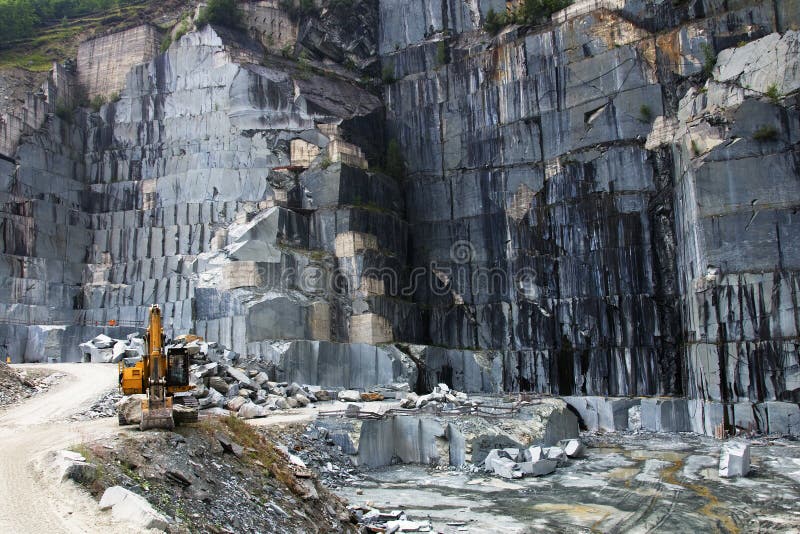Journeying Via Granite Quarries in South Africa: A Visual Odyssey
Journeying Via Granite Quarries in South Africa: A Visual Odyssey
Blog Article
Revealing the Mysteries of Granite Quarrying: Where Toughness and Elegance Meet
The world of granite quarrying is a realm where the raw stamina of nature merges with human virtuosity to create structures that stand the test of time with an air of sophistication. From the midsts of quarries to the thorough polishing in workshops, the process of transforming granite into architectural marvels is an intricate dancing of tradition and innovation. As we peer into the midsts of this ancient craft, we begin to discover the concealed ins and outs that form the really significance of our constructed setting.
The Beginnings of Granite Quarrying
In the record of building background, the beginnings of granite quarrying are shrouded in a tapestry of old workmanship and geological wonders. Going back to ancient Egypt and Mesopotamia, the extraction of granite from quarries marked the beginning of a journey that would eventually lead to the creation of some of the world's most iconic frameworks.
Granite quarrying's origins can be mapped to the knowledgeable craftsmens that acknowledged the stone's sturdiness and aesthetic appeal. Through a mix of primitive tools and sheer determination, these early quarry employees uncovered granite blocks that would become the foundation of human beings.
As human beings advanced, so did the methods of quarrying granite. The Romans, renowned for their engineering prowess, created sophisticated techniques for drawing out granite to construct monoliths, temples, and roads that stood the examination of time.
The legacy of these ancient quarrying methods remains to shape modern style, with granite continuing to be a symbol of strength and sophistication in building and construction tasks around the globe. (granite quarries in south africa)
Devices of the Quarrying Profession
The development of granite quarrying strategies from old civilizations to contemporary times highlights the crucial duty played by the devices of the quarrying trade in shaping the sector's practices. In ancient times, quarrying tools were primary, typically including blades, hammers, and wedges made from products like bronze or iron. These tools called for substantial workforce and time to extract granite obstructs from quarries.

In addition, the introduction of pneumatically-driven devices and high-powered equipment has actually substantially decreased the physical labor required in quarrying operations, enhancing worker safety and efficiency. As the quarrying sector remains to innovate, the tools of the trade continue to be at the leading edge of driving progress and shaping the future of granite removal.
Removing Blocks of Granite
Making use of precision equipment and progressed methods, the extraction of granite obstructs from quarries has ended up being a sophisticated procedure in the modern quarrying industry. The preliminary step includes determining the place and dimension of the granite deposit to determine the most reliable removal approach. Once a suitable website is selected, the removal process begins with the exploration of openings for the placement of dynamites. Regulated blowing up techniques are after that utilized to damage apart the granite right into convenient areas.

Sprucing Up and Finishing Techniques
To achieve a perfect surface on granite blocks, knowledgeable artisans utilize a series of thorough polishing and ending up strategies. After the initial removal and forming procedures, the granite blocks undergo a comprehensive click here now sprucing up phase to boost their natural elegance and toughness. One common approach used in brightening granite is diamond abrasion, where commercial rubies are utilized to grind and brighten the stone to a smooth surface. This procedure not only develops a lustrous surface yet also makes certain uniformity in color and appearance across the granite block.
In enhancement to sprucing up, ending up techniques are related to additional refine the granite's look. These strategies might include flaming, developing, or cleaning, each offering one-of-a-kind structures and surfaces to fit various visual preferences. Flaming, for example, includes exposing the granite surface area to high temperatures to create a rough, distinctive surface, perfect Go Here for outside applications where slip-resistance is vital. Sharpening, on the other hand, gives a matte surface that is smooth to the touch, excellent for interior kitchen counters and floor covering. By carefully selecting and applying these brightening and finishing strategies, craftsmens can change raw granite obstructs right into charming items that showcase both stamina and beauty.

Environmental Influence and Sustainability
With the growing focus on ecological awareness in the industry, granite quarrying methods are increasingly inspected for their effect on natural sources and lasting sustainability. Quarrying for granite can have significant ecological effects. The extraction process usually involves making use of hefty equipment, explosives, and big quantities of water, leading to habitat damage, dirt disintegration, and water pollution. Furthermore, the transport of granite from quarries to refining centers generates carbon emissions, additionally adding to ecological degradation. granite quarries in south africa.
To mitigate these impacts and ensure sustainability in granite quarrying, industry stakeholders are adopting various measures. Executing advanced technologies to decrease energy consumption and water use, reclaiming quarried land for eco-friendly reconstruction, and advertising accountable sourcing methods are some methods being utilized. Additionally, accreditations such as the Forest Stewardship Council (FSC) and the Management in Power and Environmental Style (LEED) assistance consumers determine eco-friendly granite products.
Conclusion
In verdict, granite quarrying is a process that calls for specialized tools and techniques to essence blocks of granite and polish them to a high degree of finish. While the environmental impact of quarrying can his explanation be considerable, efforts are being made to enhance sustainability practices in the market. Overall, granite quarrying is a fragile equilibrium between using the stamina and style of this natural rock while minimizing its influence on the setting.
Report this page